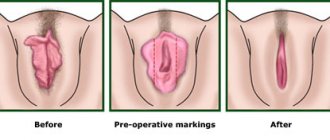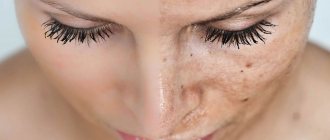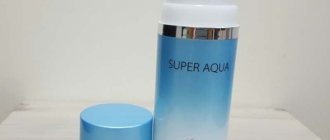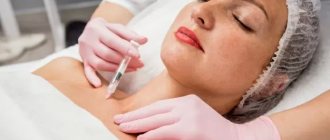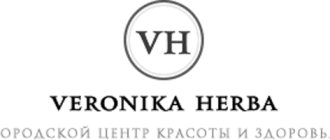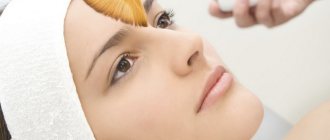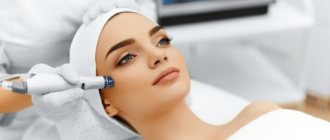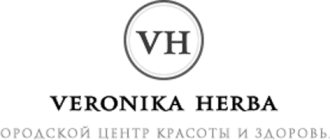Modern women care not only about the health and beauty of their face, but also their bikini area. Age-related changes, the birth of a child, hormonal imbalances and injuries can affect the appearance of the most delicate area and cause darkening of the skin. These shortcomings cause severe psychological discomfort for many and affect the quality of sexual life.
Modern aesthetic cosmetology allows you to eliminate hyperpigmentation in the perineal area and help you forget about this unpleasant problem! Those wishing to lighten the skin in the bikini area are offered intimate peeling - a comfortable and safe procedure that quickly gained popularity among both patients and cosmetologists.
What's happened
Peeling of the intimate area is a new direction in the field of aesthetic gynecology. The procedure is painless and safe. After the session, the skin becomes lighter and the tone is even.
To rejuvenate the skin in the bikini area for aesthetic purposes, special hardware or chemical peels are performed in this area.
These procedures are indicated for dry and rough skin, which often occurs in women over 30 years of age.
Cleansing can be applied to areas such as the pubis, perineum, labia, groin folds, and perianal area.
When and what is it used for?
Peeling of the sensitive intimate area is popular among both women and men. You can safely carry it out at any time of the year and with any skin type. The indications are:
- peeling in intimate areas;
- age-related changes - the appearance of sagging and wrinkles;
- unwanted pigmentation of the skin;
- stretch marks, scars, scars.
The procedure is used to restore and renew the skin no earlier than the age of 18.
Kinds
Currently, beauty salons offer several options for methods of cleansing and whitening the skin in the bikini area. Among the most popular are the following.
Chemical
During cosmetic manipulation, the specialist uses various fruit acids. Thanks to lactic acid, the skin receives additional hydration, nutrition and brightening of the surface of the epidermis. Almond remedy helps eliminate irritation and acne.
Intimate peeling must be performed by a specialist who has knowledge about the correct structure of the vulva area and, if contraindications are identified, will not perform the procedure.
Since the skin in the intimate area is more sensitive than in other areas of the body, it is very easy to injure it, so a thorough examination is necessary before manipulation.
Dermatovenerologist, cosmetologist
Zhikhoreva Inna Viktorovna
6 years experience
Citric acid allows for deeper cleansing, while tartaric acid brightens the darkest areas.
Progress
First, the cosmetologist must treat the intimate area as well as possible using a degreasing tonic. After the surface is well cleaned, a weakly concentrated preparation is applied to it. The exposure time is no more than 15-20 minutes, depending on what product is used.
Next, the skin is treated with a neutralizer. Upon completion of all manipulations, the product is washed off with warm water.
At the last stage, the skin is moisturized with cream. You can use special masks to relieve irritation from the surface layer of the epidermis.
Hardware
To eliminate skin defects in the intimate area, special equipment is used. The main difference between this type of method is a deeper impact on problem areas.
Performance
First you need to set the laser to a certain power. Only after this can you proceed directly to the work itself.
The cosmetologist moves the device over the surface of the skin, retreating 5 centimeters from it. The duration of exposure is about seven minutes.
Finally, a moisturizing or nourishing product is applied to the bikini area.
However, we must not forget that everyone’s skin is individual and has its own characteristics. The choice of product must be made taking into account certain parameters. An incorrectly selected method will not only not help cope with the problem, but will also worsen the situation.
REVIEW OF POPULAR RECIPES
At home, you can prepare peelings and scrubs of the intimate area according to popular recipes.
The mixture should only be applied if there are no fresh wounds or damage to the skin.
It is necessary to strictly protect the mucous membranes from contact with the compounds!
We recommend: PEELING OR FACIAL CLEANING: WHAT IS BETTER? | 5 differences
Aspirin
Take 2 tablets, grind them into powder between 2 metal spoons, dilute with warm water to a paste.
Rub into skin, hold for 3 minutes.
Wash off and wipe with hydrogen peroxide (3%).
Moisturize with cream.
Exfoliates well and prevents inflammation.
Sugar
Mix granulated sugar with homemade sour cream or olive oil in equal parts.
Apply with massage movements to the bikini area.
Wash off after 3 minutes and moisturize.
Helps smooth and brighten skin.
Coffee
Mix 2-3 tbsp. spoons of coffee cake and half a tsp. liquid honey.
Massage into the delicate area and rinse with water at a pleasant temperature.
Apply nourishing or moisturizing cream.
An excellent remedy against ingrown hairs.
Milk with oatmeal
Pour a large spoonful of oatmeal with milk until it becomes a paste, wait 10 minutes and apply to the bikini area for 3-5 minutes.
Well nourishes, cleanses, rejuvenates.
Whitening with peroxide and ammonia
To a tablespoon of 3% hydrogen peroxide, add half a teaspoon of ammonia.
Massage in, leave for 3 minutes, then rinse with water.
Apply every 3-4 days for 1 month.
Indications
Most often, peeling of the intimate area is carried out when the skin surface is dry and rough, which often manifests itself in girls under the age of 30. This occurs as a result of insufficient oxygen supply to the cellular structures and tissues of the skin.
In addition, the procedure is indicated for women who have reached the age of 30, since during this period natural moisture is lost, pigmentation begins to appear, and a change in the structure of the epidermis is noted.
As you get older, the signs of aging become more noticeable. As a rule, the skin becomes dull and acquires a dark tint. Vascular compactions may appear.
In what cases is it used?
Intimate peeling is recommended for both women and men. Reasons that provoke pigmentation in the intimate area :
- hormonal disbalance;
- injury;
- genetic predisposition;
- birth of a child;
- increased sweating;
- wearing uncomfortable underwear;
- lactation;
- sagging skin;
- uneven microrelief;
- chrono- and photoaging;
- age-related changes.
At a young age, peeling and dryness in the intimate area may occur. After 30–40 years, women experience darkening of the labia.
Indications for peeling may be the presence of stretch marks, ingrown hairs and small scars.
Pigmentation can occur as a result of wearing ill-fitting underwear . Women who often wear thongs are at risk.
Overweight people often face the problem of pigmentation: the inner surfaces of the thighs rub against each other. The result is redness, infection, and over time the skin becomes rough and dark.
Before using the procedure, you should consult a specialist.
Skin care after
As a rule, the recovery period takes no more than five days. During this period, you should avoid visiting the sauna, bathhouse, public swimming pool and open water bodies. To prevent the skin from flaking, it is recommended to apply a moisturizer to it.
Why can our articles be trusted?
We make health information clear, accessible and relevant.
- All articles are checked by practicing doctors.
- We take scientific literature and the latest research as a basis.
- We publish detailed articles that answer all questions.
It is better to avoid tanning in a solarium or in direct sunlight.
In addition, in order for the achieved effect to last for the maximum amount of time, it is necessary to use a special product with whitening properties to treat the skin once a week.
Dermatime chemical peels for aesthetic correction of the intimate area in women
The aesthetic appearance of the genitals has worried humanity for centuries. Standards most often arose under the influence of medical or religious ideas. Today, cosmetic procedures in gynecology are aimed at subjectively improving the appearance of the genital organs, which helps normalize functional and psychological comfort and sexual satisfaction. One of these procedures is intimate whitening, which is becoming increasingly popular among modern women.
Throughout a woman's life, numerous changes occur in her overall appearance and in the appearance of her intimate area. These changes are associated with both physiological processes in the body (pregnancy, childbirth, menopause, etc.) and pathological ones (insulin resistance, diseases of the gastrointestinal tract, inflammatory and infectious processes in the genitals, excess weight, incorrect hair removal of the bikini area, etc. .) [2–4].
From about 25 years of age, women are already faced with the problem of hyperpigmentation of the anogenital area, and a little later – with a decrease in the tone and turgor of the skin of this delicate area [5, 6]. The process of natural aging is aggravated by childbirth, hormonal disorders, depilation, amenorrhea, and early menopause.
Often, aesthetic defects in the intimate area cause discomfort or psycho-emotional distress. Excessively dark skin color in the perineal area is not only a reason for embarrassment and awkwardness during intimacy [2]. Women are embarrassed about their bodies in the locker room, on the beach, at a doctor’s appointment, and for dancers, gymnasts, and models, “non-ideal” skin pigmentation can lead to the end of their careers.
The demand for lightening and rejuvenating the skin of the intimate area has increased significantly in recent years, and the topic of improving its appearance is no longer taboo and exclusively personal.
Lightening and rejuvenation of the skin of the intimate area
Correction of aesthetic defects in the anogenital zone can be carried out using hardware methods or chemical peeling. And here the absolute trend is, of course, peelings. They are easily tolerated, there is no need for rehabilitation after them, they have practically no contraindications, they have a brightening, strengthening and rejuvenating effect, helping to get rid of complexes, enhance sexuality and improve the quality of intimate life [6, 7].
The intimate peeling procedure is quite simple, however, it can only be performed by a qualified doctor who knows the specifics of working with the intimate area and knows how to correctly use chemical peels. In this case, the course of procedures gives truly impressive results without side effects. The intimate peeling procedure is primarily aimed at solving such aesthetic problems in the anogenital area as hyperpigmentation, decreased tone and turgor of soft tissues.
Contraindications to the use of chemical peeling in the intimate area: – pregnancy and breastfeeding; – age up to 18 years; – herpes during an exacerbation; – tendency to form keloid scars; – acute vulvovaginitis; – damage to the skin in intimate places; – hemorrhoids, anal fissures; – oncology of any location and stage; – allergy to the peeling composition; – skin hypersensitivity; – dermatitis and rosacea; – severe and decompensated somatic diseases.
Lightening the intimate area
Hyperpigmentation in the intimate area appears as dirty brown areas or limited pigment spots (Fig. 1). These darkenings are associated with excessive melanogenesis and the accumulation of melanin due to hormonal changes (pregnancy, taking hormonal medications, endocrine disease), chafing of the skin when wearing tight underwear, frequent depilation, excess weight, and hereditary predisposition.
The problem of imperfect skin color in the intimate area can be solved on an outpatient basis with the help of intimate peeling (Fig. 1), the action of which is aimed at inhibiting melanogenesis, activating the work of endogenous antioxidants and improving the microbiome. This usually involves 3–7 professional procedures and the subsequent use of special long-acting medications during home care.
One of the most popular brands of intimate peelings is Dermatime (Spain) (Fig. 2). The delicate effect of these peels is based on a correctly selected composition, including active ingredients of high pharmaceutical quality, and an adjusted pH of the preparations.
For effective whitening of the perineum, vulva, groin, anus and skin lifting, Dermatime peelings are produced in several versions, different combinations of which allow you to achieve : – lightening and evening out skin tone; – elimination of pigmentation of various origins; – restoration of physiological processes and launch of de novo collagen production; – deeper penetration of active ingredients included in daily home care products.
The headliner of the intimate peeling procedure can be safely called the Vita C Kojic brightening micro-exfoliating gel mask, which is used in the whitening and rejuvenating protocols below and is used as a basis for peeling. It contains highly concentrated vitamin C (50%) and kojic acid from fermented rice grains (3%), which have an intense antioxidant and revitalizing effect. The gel mask allows you to delicately exfoliate the skin and has a pronounced brightening, rejuvenating, strengthening and moisturizing effect on the epithelial tissue of the intimate zone.
Vita C Kojic peeling is supported by a “sealing” peeling cream with 5% retinol Retinol 5n RRT Sealing Set, which not only brightens (suppresses the production of tyrosine hydrolase), renews and deeply moisturizes the skin, but also leads to a filling effect. The technology of encapsulating retinol in nanosomes allows it to be used even on very sensitive skin that is not tolerant to retinol.
Dermatime brightening intimate peeling (procedure protocol)
The procedure does not require preliminary preparation, is absolutely painless, and has no pronounced rehabilitation period or seasonal restrictions.
- Cleanse the skin with Eva Care cream-gel.
- Degrease the skin with Degreaser Lotion.
- Apply Protector moisturizing protective cream to the vulvar mucosa.
- Mix 3 g of Vita C Kojic powder with 6 ml of water (1:2). Beat thoroughly with a brush and leave for 5 minutes to thicken. Apply with a brush or gloved hand to the treated area. Exposure time in the intimate area is 15–20 minutes; Every 5 minutes the skin should be moisturized and gently massaged, not allowing the mask to dry out.
- Rinse off the peeling with plenty of warm water and dry the skin.
- Apply booster serum Neoretin Serum (Cantabria Labs, Spain) to areas with pigmentation.
- Apply cream peeling with retinol Retinol 5n RRT Sealing Set.
The complex use of two peels and a whitening booster serum in one protocol allows you to influence several stages of melanogenesis at once, destroying melanin and inhibiting its transport to the upper layers of the epidermis, preventing the formation of new foci of hyperpigmentation. In addition, a course of such procedures has a powerful anti-aging effect, renewing and regenerating the skin.
The procedures are carried out with an interval of 10–20 days in a course of 4 to 8 procedures (depending on the severity and depth of the pigment). Moreover, the results are visible after the first session and increase noticeably with each procedure. To maintain the effect after a course of procedures, it is recommended to carry out one procedure every six months. Brightening intimate peeling does not disturb the established rhythm of life and can be performed at any time of the year.
ATTENTION!
- The intimate peeling procedure can be carried out no earlier than 10 days after tanning on the beach or in a solarium.
- Hair must be removed 3-4 days before peeling.
Clinical examples
Patient E., 43 years old. Hyperpigmentation in the intimate area appeared during the second pregnancy and intensified during lactation. The patient underwent a course of peelings consisting of 8 procedures, once every 7–10 days. After the second procedure, the skin began to look 20% lighter, and after the eighth procedure – by 90%. Over the next 2 months, with external use of the whitening serum with retinol Neoretin DC (3 times a week) and the systemic antioxidant dietary supplement Heliocare Pure White, 100% satisfaction with the result was achieved. The results shown in the before and after pictures (Fig. 3) were taken 20 days apart.
Patient L., 40 years old. Hyperpigmentation in the intimate area appeared several years ago and has intensified recently. The patient underwent a course of peelings consisting of 4 procedures with an interval of 1 time every 10 days. The patient noted the result of lightening after the first procedure; the fourth procedure led to the equalization of skin color in the intimate area (Fig. 4). It was decided to carry out maintenance procedures once every 3–5 months. The results presented in Fig. 4, made with an interval of 40 days.
Rejuvenation of the intimate area
Low turgor of the soft tissues of the genital area is the second most common problem with which patients turn to a gynecologist, wanting to achieve aesthetic rejuvenation of the intimate area.
Reasons for decreased elasticity and turgor of soft tissues: – overstretching of tissues during childbirth; – postoperative scars; – radical change (decrease) in body weight; – frequent depilation; – age-related changes.
Rejuvenation of the intimate area includes homogenization of skin color, restoration of pH, lipid barrier, replenishment of hydraulic reserves by activating the production of ceramides and glycosaminoglycans, compaction, increased elasticity and lifting of the skin through increased synthetic activity of fibroblasts producing collagen, elastin, and reticulin.
Rejuvenating peeling Dermatime (protocol of the procedure)
The procedure does not require preliminary preparation, is absolutely painless, and has no pronounced rehabilitation period or seasonal restrictions.
- Cleanse the skin with Eva Care cream-gel.
- Degrease the skin with Degreaser Lotion.
- Apply Protector moisturizing protective cream to the vulvar mucosa.
- Mix 3g of Vita C Kojic powder with 6ml of Lactic A80 Gel peeling. Beat thoroughly with a brush and leave for 5 minutes to thicken. Apply with a brush or gloved hand to the treated area. Exposure time for the intimate area is 15–20 minutes; Every 5 minutes it is necessary to moisturize and gently massage the skin, preventing the mask from drying out.
- Rinse with plenty of warm water and dry skin.
- Apply Global GF concentrate with growth factors (contents of 1 ampoule).
- Apply “sealing” peeling cream with retinol Retinol 5n RRT Sealing Set.
- Wash off the peeling after 8–12 hours.
The frequency of repetition of procedures is 1 time in 12, 14, 20 days. The recommended number of procedures is 4–8.
The synergistic effect in one protocol of 2 peels with concentrated fruit acids (50% L-ascorbic + 80% lactic acid), a rejuvenating concentrate with growth factors and encapsulated 5% retinol has a powerful anti-aging effect, renewing and regenerating the skin (Fig. . 5).
To achieve a more pronounced rejuvenating effect, peeling can be performed as a single procedure, or in combination with radio frequency (RF) lifting (using DQRF dynamic quadripolar radio frequency technology implemented in the EVA device).
FAQ (frequently asked questions)
- Is the intimate peeling procedure painful? Dermatime intimate peelings do not cause any discomfort either during the procedure or during the rehabilitation period. There are no prohibitions in the post-procedure period, there is only a recommendation for the use of moisturizing cream with aloe Hidraloe Moisturizing Cream for faster skin restoration.
- At what age can intimate peeling be done? From the onset of adulthood.
- When should I expect lightening results after intimate peeling? A full course usually includes 5-7 procedures, but skin lightening by 1-2 tones is noticeable after the first procedure.
- How long does the result last after completing the course? The duration of the effect depends on compliance with supportive recommendations and the individual characteristics of the patient’s body. On average from 6–8 months to 2 years.
- How often can you peel the bikini area? A course of intimate peelings consists of 5–8 procedures, which are carried out once every 2–3 weeks.
- Is it possible to combine intimate peeling with other aesthetic procedures (PRP therapy, fillers, RF lifting)? Yes. The combined effect on the tissue will lead to a more pronounced result, especially for the skin lifting effect.
CONCLUSION
Intimate peeling with Dermatime preparations is a delicate and very effective procedure aimed at reducing the volume of the epithelium, improving the microbiome, strengthening the barrier properties of the skin, moisturizing it and, of course, lifting it. A pleasant bonus is slowing down growth and preventing the appearance of ingrown hairs.
The full version of the article can be read at the link.
Consequences
As a rule, during the rehabilitation period the patient may notice redness and peeling of the skin. This condition is considered normal and goes away on its own as it heals.
To speed up this process, you can use a moisturizer.
If the technology for using a drug that contains hydroquinone has not been followed, there may be a complication in the form of irritation and itching. Over time, the development of ochronosis cannot be ruled out. This is a pathological condition accompanied by the acquisition of black-blue skin.
Aravia Professional Papaya Enzyme Peel: review and effectiveness
Enzyme peeling from Aravia Professional is the best representative of the line, allowing you to eliminate minor defects of the epidermis. The composition includes the following active substances.
- Papain. An enzyme extracted from papaya. The main active ingredient that destroys molecular bonds and ensures the removal of the stratum corneum.
- Sodium hydroxide. Fights acne, exfoliates dead cells.
- Polyquartenium. It is necessary to create a soft texture and film formation, and additionally has an antimicrobial effect.
- Benzyl alcohol. The main preservative, which is also an antiseptic.
The composition also contains purified water, stearic acid, urea, potassium cetyl phosphate, olive oil, glycerin, triethanolamine, allantoin. The ingredients are considered safe, so the product is approved for use on hypersensitive and rash-prone skin.
According to reviews, regular use of Aravia Professional Papaya Enzyme Peel provides the following effect.
- Evens out tone, tightens pores, eliminates redness.
- Elimination of rashes and blackheads.
- Significant lightening of acne marks.
- Moisturizing the dermis, eliminating peeling.
All women who use enzymatic peeling from Aravia Professional note a positive result after the first use.
Cost of the product:
from 580 to 700 rubles.
Effect
The results of peeling in the bikini area can be seen after the recovery period is completely completed. Typically it takes about 3-7 days.
Thanks to this procedure, it is possible to get rid of the problem of ingrown hair. It allows you to eliminate pigment spots, lighten the skin, and normalize the activity of the sebaceous glands.
After a full course of cosmetic manipulation, the skin of the intimate area acquires a fresh, young, well-groomed appearance. Becomes more elastic and toned.
Kojic acid, which is part of the drug, has antifungal and antibacterial properties. Rucinol helps lighten the surface of the skin. Genistein stimulates and rejuvenates cells.
Peeling PRX-T33
Peeling PRX-T33 is a type of cosmetic procedure of a chemical type.
Thanks to papain, hair growth in the bikini area is noticeably reduced.
Retinol restores collagen production and its interaction with elastin.
Not only the pores, but also the deep layers of the dermis are cleansed.
According to most experts, this procedure should be done after each hair removal.
Contraindications
Intimate peeling is a safe procedure, but it has its contraindications. It must be abandoned if:
- anal diseases;
- hypersensitivity;
- tendency to an allergic reaction;
- pregnancy;
- lactation period;
- damage in the peeling area;
- fresh wounds after shaving or sugaring;
- oncology;
- skin infectious diseases;
- venereal diseases.
Before carrying out the procedure, you need to make sure it is safe.
Post-depilation scrub “Arabia”
Aravia Professional sugar scrub after depilation with almond oil for deep cleansing, nourishing the skin, and preventing the appearance of ingrown hairs after depilation. Organic sugar crystals gently and delicately remove dead skin cells, smoothing the skin surface.
Almond and peach kernel oils intensively nourish and moisturize the skin, leaving it smooth and velvety. Shea butter and vitamin E restore the skin's natural protective barrier, allowing the skin to maintain its natural moisture level for a long time. The scrub is intended for home skin care after depilation, prevention of dry skin, hyperkeratosis and ingrown hairs.
Composition of enzyme body peels
There are several types of peels depending on the origin of the active enzyme.
Plant enzymes:
- Papain is obtained from the milky juice of papaya. Accelerates the breakdown of proteins into amino acids. Has antimicrobial and exfoliating properties.
- Sorbaine – derived from lemon and papaya. Removes dead cells, enhances metabolic processes.
- Bromelain – derived from pineapple. Neutralizes inflammatory processes, relieves swelling, accelerates the healing process of wounds.
- Ficin – obtained from the juice of the stems and leaves of figs. It not only breaks down protein molecules, but also activates collagen production. Has an exfoliating effect.
- Actinidin – obtained from kiwi fruit. Helps remove dead cells.
- Arbutin – obtained from the leaves of bearberry, blueberry, lingonberry, and wintergreen. Suppresses the synthesis of melanin, due to which it has a whitening effect.
Animal enzymes:
- Pepsin is extracted from the gastric mucosa of animals: sheep, pigs, calves. Its main function is the breakdown of proteins.
- Trypsin and chymotrypsin are extracted from the pancreas of cows. They are catalysts for the breakdown of proteins and peptides.
- Pancreatin is extracted from the pancreas of pigs and cattle. Breaks down proteins, fats and carbohydrates, promoting the removal of toxins.
- Lysozyme – extracted from chicken egg white. Destroys bacterial cell walls and intercellular cement. It has bactericidal and anti-inflammatory effects, stimulates the immune system, and destroys pathogenic bacteria.
Recommended articles on the topic:
- Thermal detoxification: lightness of the body and clear skin
- Lipolytic therapy: indications, contraindications, stages of the procedure
- Weight correction: everything you need to know about the procedure
Bacterial enzymes:
- Subtilisin is produced by a special type of bacteria during the fermentation process. It is more effective compared to enzymes of plant origin. Accelerates the process of breakdown of proteins, peptides, esters, amino acids.
- Travase is a protease enzyme produced by the bacteria Bacillus subtilis. Has pronounced loosening and exfoliating effects. Included in cosmetic products with a whitening effect.
Milk proteins and enzymes:
- Casein is a complex protein that is formed when milk curds. Has moisturizing, softening and regenerating effects.
- Lactalbumin is a protein from mammalian milk whey. It is a source of amino acids necessary for the normal functioning of the epidermis. Has nutritional properties.
- Acid proteinase is a group of enzymes similar in structure to plasma components. Promotes the breakdown of peptides.
In addition to the listed components, enzyme body peels may include enzymes to protect cells from ultraviolet rays, free radicals and toxins, vitamins, minerals, extracts and extracts of various plants, milk and vegetable proteins.
Read material on the topic: Deep atraumatic back cleansing
How to prepare for enzyme hair removal?
Perhaps, there is no need to emphasize that the procedure must be carried out by a qualified specialist - this factor is taken into account a priori. On the eve of the prescribed manipulation, the specialist must conduct a skin test to check for allergic reactions. To do this, an enzyme cocktail is applied to the skin of the forearm and wrapped in film. After 10-15 minutes, it becomes clear how the body reacts to this remedy. If there is no itching, burning or redness,
enzyme hair removal is allowed
. At the preparatory stage, the use of creams, deodorants and lotions is prohibited in areas that will be exposed to enzymes - these products slow down the process of enzymes penetrating deep into the hair follicles.
Peeling before depilation: how long to wait
Carrying out the procedure immediately before sugaring or waxing can cause severe damage to the skin. Any, even mild, cleansing compositions are contraindicated, including scrubs, gommage and superficial salon peels, which, according to cosmetologists, are absolutely safe. In any case, after the procedure, you must wait at least 2 weeks before depilation.
After a medium peel, which has a deeper effect, you need to wait several months before going for hair removal with sugar or wax. As for deep peeling, this is a very serious process that affects all layers of the epidermis. After it, no aggressive procedures, including sugaring and waxing, can be carried out for more than a year.
Benefits of enzyme hair removal
It is important to remember that this procedure is a course, so you need to tune in to at least 10 visits to an enzyme hair removal specialist. After the first procedures, the result becomes noticeable - the amount of hair is reduced and its growth slows down. However, to get a guaranteed result you need to be patient.
If we talk about the advantages of the procedure, it is worth highlighting:
- Almost complete painlessness
- Versatility ( enzyme hair removal is suitable for any skin type)
- Ability to remove unwanted hair in hard-to-reach places
- No contraindications related to the time of year
Having decided to undergo a course of enzyme hair removal, you should remember that the final result depends mainly on two factors - the qualifications of the specialist who will carry out the procedure, and the individual characteristics of the body. If
enzyme hair removal does not bring the long-awaited effect
, you need to pay attention to the combination of all the factors on which the outcome of the manipulation depends.
